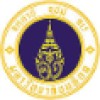
Efficacy and Safety of SP-8203 in Patients With Ischemic Stroke Requiring rtPA
Ischemic StrokeThis clinical trial is designed to evaluate the efficacy and safety of the combination therapy of SP-8203 (Otaplimastat) and recombinant tissue Plasminogen Activator (rtPA) standard of care. In this clinical trial, rtPA will be injected intravenously using an infusion device. If reperfusion is not occur in spite of rtPA therapy, endovascular therapy can be performed.

A Smart Home-based Exoskeleton Robot System for Stroke Patients
RehabilitationTenodesis2 moreIn the proposed study, the investigators assumed that high dose of repetitive motor task training using an exoskeleton robot-assisted system may provide benefits in motor shaping and greater brain priming for hand paresis of the stroke patients. Nevertheless, the amount of therapeutic activity with clinicians' guidance is often short of number in therapy sessions.Therefore, using Internet of Things (IoT), connected rehabilitation products and the data they generate that are a new trend of rehabilitation strategy for providing remote home-programs support. The specific aim of this study is to to explore the feasibility of introducing the rental services of a Smart Home-based Exoskeleton Robot System through the IoT business model. And the second purpose is to investigate the effects of applying the exoskeleton robotic device for tenodesisgrip training as a home-based treatment for chronic stroke patients.The expected outcomes of this research are to clarify the feasibility of using IoT business model for launching smart rehabilitation device rental service and the effects of application a high dosage of hand movement training as home program on motor and hand function for patients with chronic stroke.

Efficacy and Safety Study of Neu2000KWL for Acute Ischemic Stroke Patients Within 6 Hours of Onset...
StrokeCerebral InfarctionThe purpose of the study is to explore safety and efficacy of Salfaprodil administration for patients with acute ischemic stroke within 6 hours of onset.

The Effect of Scapular Exercises in Patients With Stroke
StrokeAcuteThere is a paucity of research on the correlation between postural control and upper extremity function. Analyzing the mechanisms of postural deficits and related problems is believed to give idea for any conceivable advance in future rehabilitation strategies in patients with stroke. The purpose of this study was to examine the effect of scapular exercises on the scapular stability and trunk control. We hypothesized that scapular exercises correct the scapular position and improve postural control. Hence the reaching out movement can be applied in a controlled and fluent manner at the end of the treatment.

PNF Techniques to Improve Bed Mobility, Transfer and Early Trunk Control in Stroke Patients
StrokeTrunk control is an important factor which is disturbed after the stroke. The literature reviews suggest that trunk exercises are required to achieve good trunk stability which is essential for balance, daily functional activities and higher function tasks. By keeping these facts in view present study aims at evaluating the efficacy of PNF techniques & conventional trunk exercise to improve trunk control in recovery stage hemiplegic patients Objective: To determine Proprioceptive neuromuscular facilitation (PNF) Techniques to improve bed mobility, transfer and early trunk control in Stroke patients

The Effects of Bobath Method and Task-Oriented Approach in Stroke Patients
StrokeTrunk impairment and asymmetry that occur after stroke negatively affect many functional activities in the daily lives of patients. There are different neurophysiological approaches such as Bobath method and task-oriented approach used in post-stroke rehabilitation programs in the literature. However, there are not many studies that comprehensively evaluate and compare the effects of these neurophysiological approaches on trunk muscles, balance and gait in stroke patients. The aim of this study is to examine and compare the effects of Bobath method and task-oriented approach on architectural features and activation of trunk muscles and functional performance in stroke patients. In addition, this study will demonstrate with muscle thickness and activation the asymmetry that may occur between the hemiparetic and non-paretic trunk muscles of stroke patients, and will allow examining the effects of these features on functional performance. This study was planned to include two treatment groups. The Bobath group will receive Bobath based trunk, balance and walking exercises, while the task-oriented group will receive exercises for oriented task. Trunk impairment, motor functions, thickness and activation of trunk muscles, spatio-temporal parameters of gait, balance and goal attainment will be assessed before and after 8 weeks treatment program. As a result; effectiveness of Bobath method and task-oriented approach will be compared and relationship between muscle thickness, activation and functional performance will be examined.

Mirror Feedback, Augmented Task-Specific, Impairment-Oriented Therapy, Home Practice, Stroke Rehabilitation...
Stroke RehabilitationIn this study, the investigators will (1) examine immediate and long-term effects of MT priming with task-specific training versus MT-priming with impairment-oriented training, relative to a dose-matched control therapy on motor function, arm activities, quality of life, etc; (2) provide comprehensive evaluations based on the ICF model to identify the specific benefits of MT-priming regimens; and (3) explore demographic and clinical characteristics of participants that may predict treatment outcomes.

The Use of the Tip Stim Glove Device to Achieve Coordinated Movement of the Human Hand
StrokeIschemicThe study was to evaluate the use of the Tip Stim device to achieve coordinated movement and grip force in stroke patients under conditions of active and passive stabilization of the trunk.

The Effects of Anodal and Cathodal tDCS Combined With Conventional Physical Therapy in Patients...
StrokeAcuteThe objective of the study is thus to compare the effects 5 consecutive sessions of anodal and cathodal tDCS combined with conventional physical therapy on upper and lower limb motor performance in acute stroke at immediate, and 1-month followup.

Tenecteplase Reperfusion Therapy in Acute Ischemic Cerebrovascular Events(TRACE)
Acute Ischemic StrokeTo explore the safe and efficacious dose of rhTNK-tPA injection administered within 3 hours after onset of hyperacute ischemic stroke; to provide dose evidence for phase III clinical trial.
